It's Peak Pear Season — Here Are 10 Different Varieties You Need to Try ASAP

Apples and pumpkins may get a lot of love come fall, but one fruit you shouldn't overlook at the orchard? Pears. The juicy fruit comes in many colors and all shapes and sizes. Some are super sweet and juicy, while others can be firmer and tart, which makes them great for a range of uses, including snacking, baking, poaching and preserving.
Another reason to stock up on the autumnal fruit? Pears pack a whole host of health benefits. According to usapears.org, they're an excellent source of fiber and vitamin C, with only 100 calories per pear. They're also known to fight inflammation and help keep your heart healthy and your gut happy.
While there are more than 3,000 varieties of pears worldwide, especially in Asia and Europe, there are ten principal pears that are grown in the Pacific Northwest. Keep reading for our handy cheat sheet to the 10 different types of pears you're most likely to find at your grocery store or farmers' market, plus the recipes they're best for.
Related: 15 Elegant Pear Recipes
When Are Pears in Season?
You can find pears pretty much year-round, but they are at their peak from October to February, which is when you can find the widest variety. Read on for more detailed information about each type of pear, plus when they are at their peak.
10 Different Types of Pears
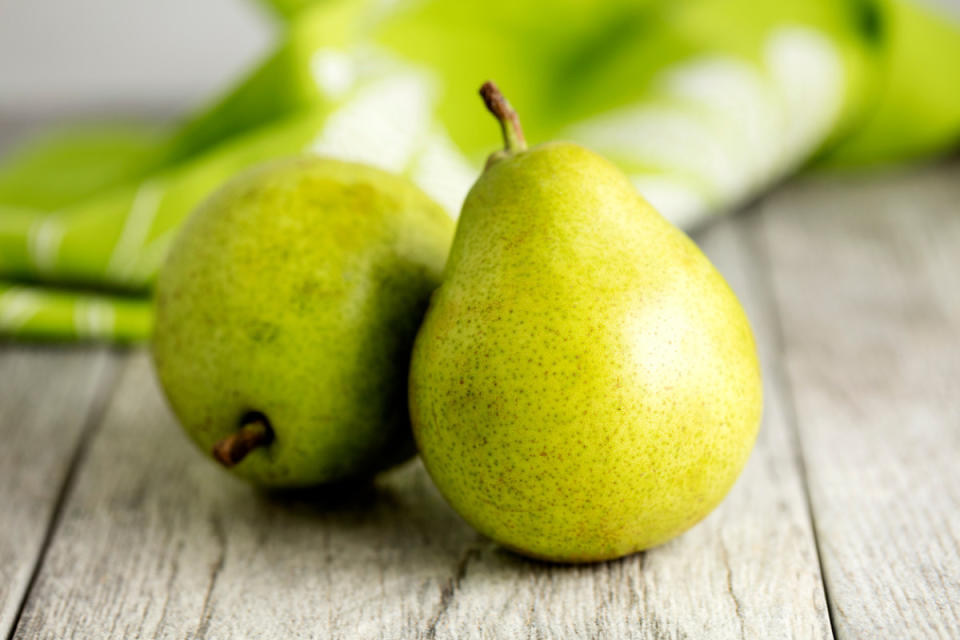
iStock
1. Green Anjou
Green Anjou pears are among the most popular types, known for their bright green hue and subtle sweetness. When ripe, the egg-shaped pear is juicy and relatively firm, which makes it perfect for baking, roasting and grilling because the fruit will hold its shape. They would also be wonderful in this roasted autumn fruit salad.
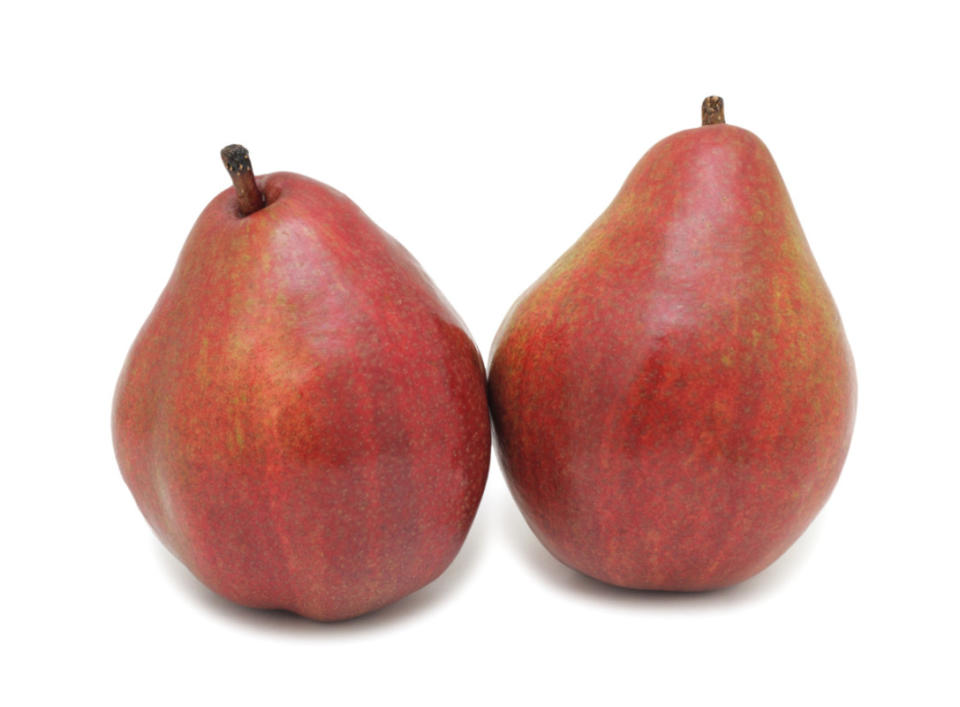
iStock
2. Red Anjou
Not surprisingly, Red Anjou pears have a flavor profile similar to their green counterpart. The only major difference is their color, which is more of a dark maroon with darker stripes and greenish speckles. Like Green Anjou pears, they're more bulbous near the bottom and taper toward the top. Try them in Julia Child's Tarte aux Poires, which she often made for her husband, Paul.

3. Bartlett
Bartlett pears are one of the juiciest varieties out there, especially when they're at peak ripeness. They may look greenish at the grocery store, but that's because they're not quite ripe. A ripe Bartlett pear will have a pale yellowish hue. They're sweeter and softer than Anjou pears, which makes them a favorite for canned, chutney-making or turning into pear syrup. They're also a popular snacking pear.
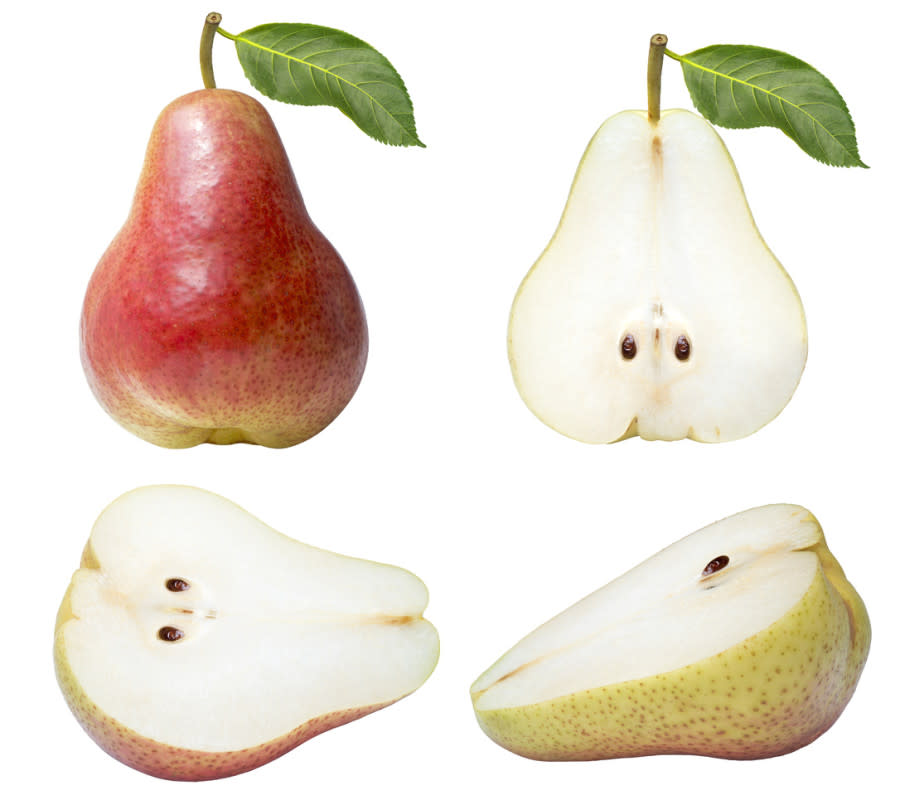
iStock
4. Red Bartlett
Juicy and aromatic, Red Bartlett pears look like standard Bartlett pears, but with a reddish skin. As they ripen, red Bartlett pears go from darker crimson to vibrant red with a stripey bottom. Toss the scarlet slices into a mixed green salad or bake them into a pear pie or a pear cake. Because both kinds of Bartlett pears are so great eaten fresh, they're also a great addition to a grazing board.
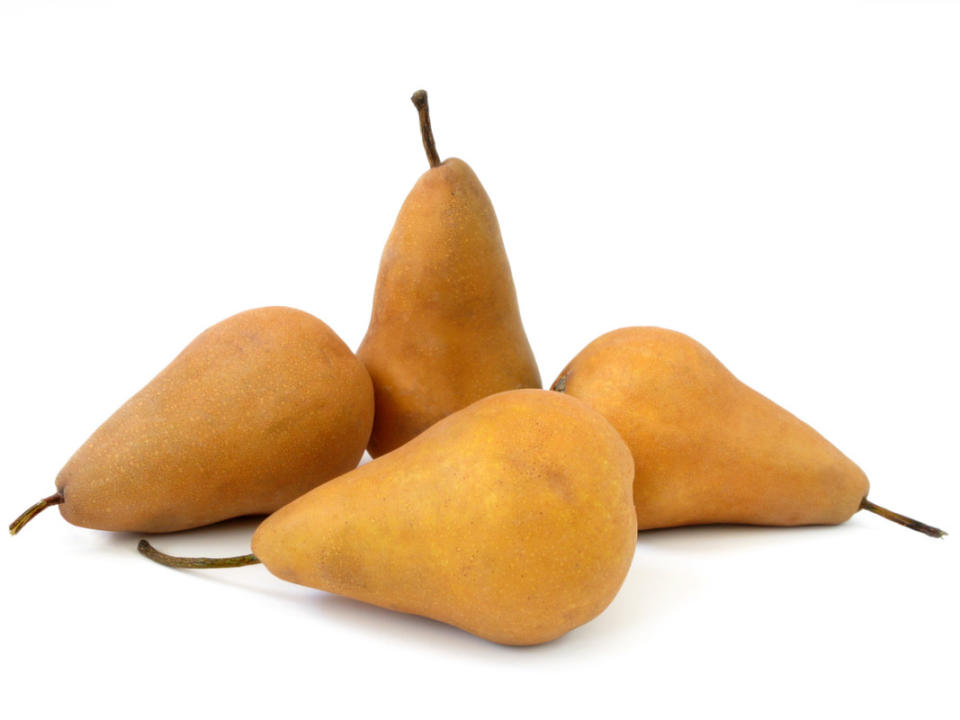
iStock
5. Bosc
If you prefer a crunchy pear over a soft, super juicy one, Bosc is for you. They're easy to spot thanks to their russet brown skin and a long, curved stem and neck. Bosc pears also tend to be sweeter when they're still a little under-ripe, so you can enjoy their honey-like taste even if the fruit is a bit firm to the touch. Bosc pears are perfect for poaching. You can infuse the poaching liquid with spices like cinnamon, nutmeg and cloves. Try poaching peeled Bosc pears in red wine for a pretty pink dessert.
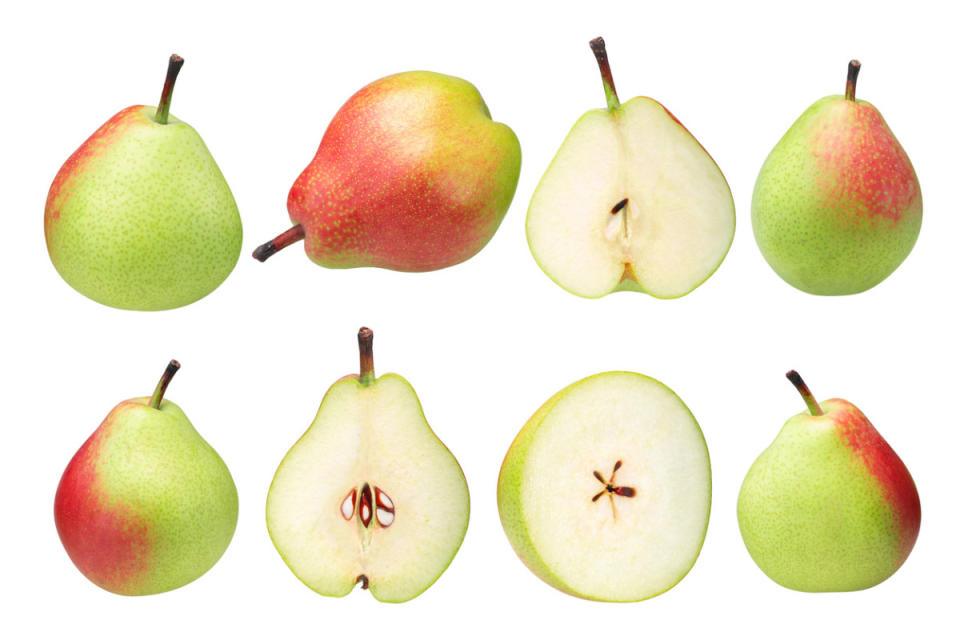
iStock
6. Seckel
Seckels are smaller, bite-sized pears with red and green patches. They have a shorter, nubby stem and roundish silhouette, and tend to be on the crisper side. Because they're so small, they're great for canning whole. They're also very cute, which makes them great for using as table decor in an arrangement or in a pretty fall-themed fruit bowl or on cheese boards.
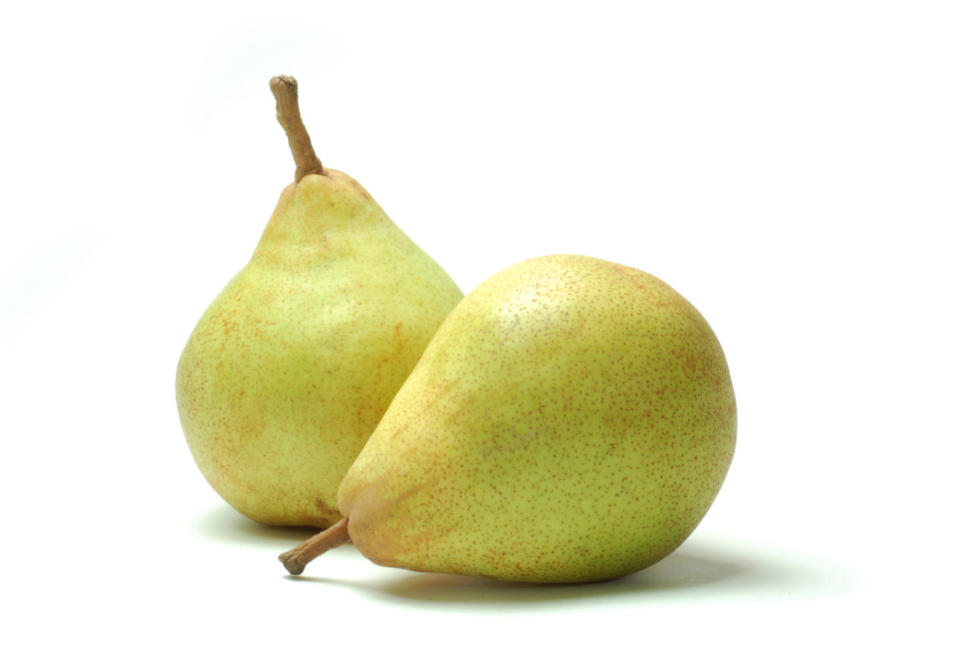
iStock
7. Comice
Comice is a sweet pear that's soft and juicy with buttery flesh. They have rounder bodies and itty bitty stems and range widely in size from small to quite large. Comice pears are a favorite in holiday fruit baskets, so they're often called the "Christmas Pear." Be careful with this delicate fruit because their thin skin can bruise easily. These pears are also available all the way through February, so you'll be snacking on them well into the new year. For an easy dessert, pair Stilton or a soft cheese like Brie with Comice pears
Related: 3 Perfect 'Pearings'
8. Concorde
Corcorde pears, which originated in England and are a cross between Conference and Comice varieties, are crunchy and sweet with notes of vanilla. They're also one of the longest pears with a tapered neck and a skinny, curved stem. Like most pears, they ripen best on the countertop — not in the fridge — so arrange them in a pretty bowl until you're ready to eat them.
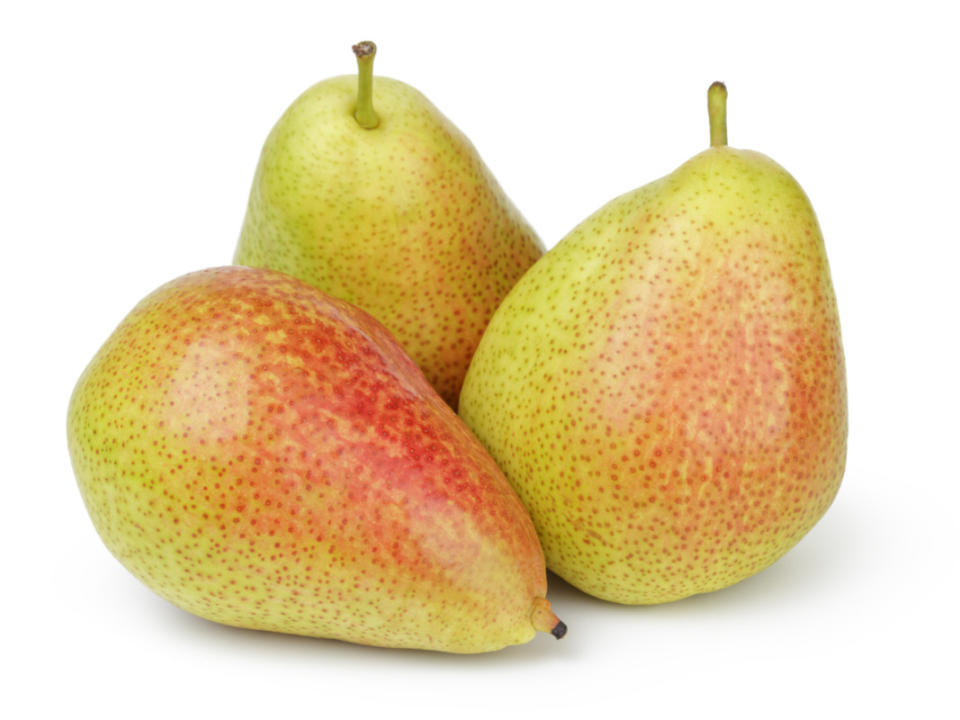
iStock
9. Forelle
Forelle pears have a tangier taste and stand out in a sea of green fruits, thanks to their speckled skin. Larger than Seckels but smaller than Bartletts, they are prized amongst pear lovers for their festive red freckles, called lenticels. They also have a longer season that stretches into January making them an ideal holiday pear. Dip them in caramel, bake them into tarts and cakes or take advantage of their petite size that fits neatly inside a lunchbox.
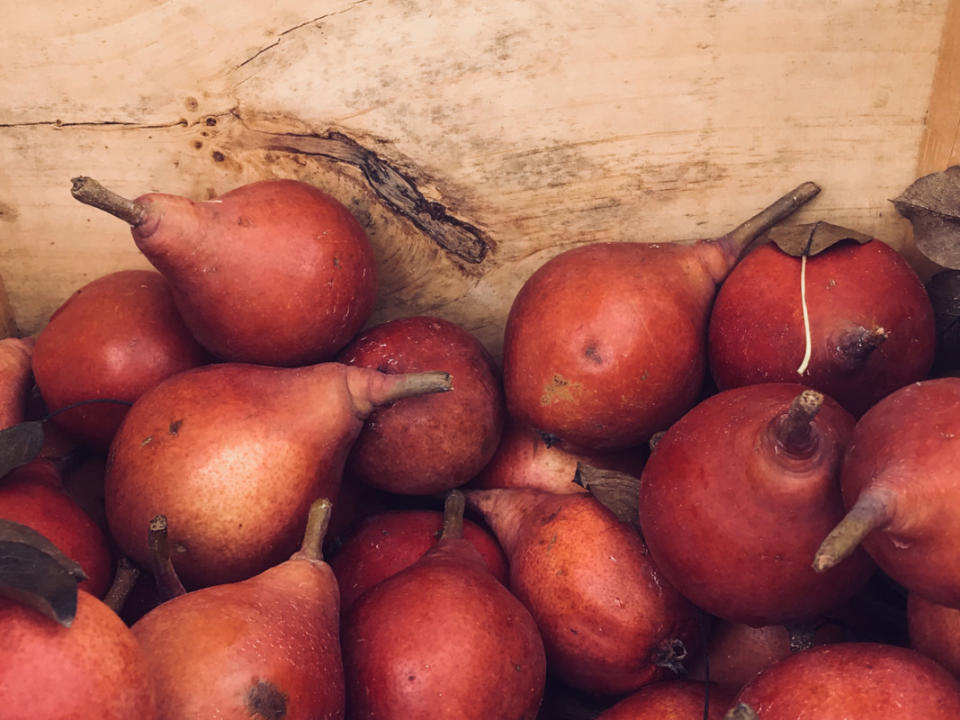
iStock
10. Starkrimson
A classic red pear, Starkrimsons are very sweet and juicy when ripe but it's their striking crimson skin that will make you want to show them off in a seasonal salad or as part of a centerpiece. Their sweet floral flavor also make them the perfect snacking pear.
